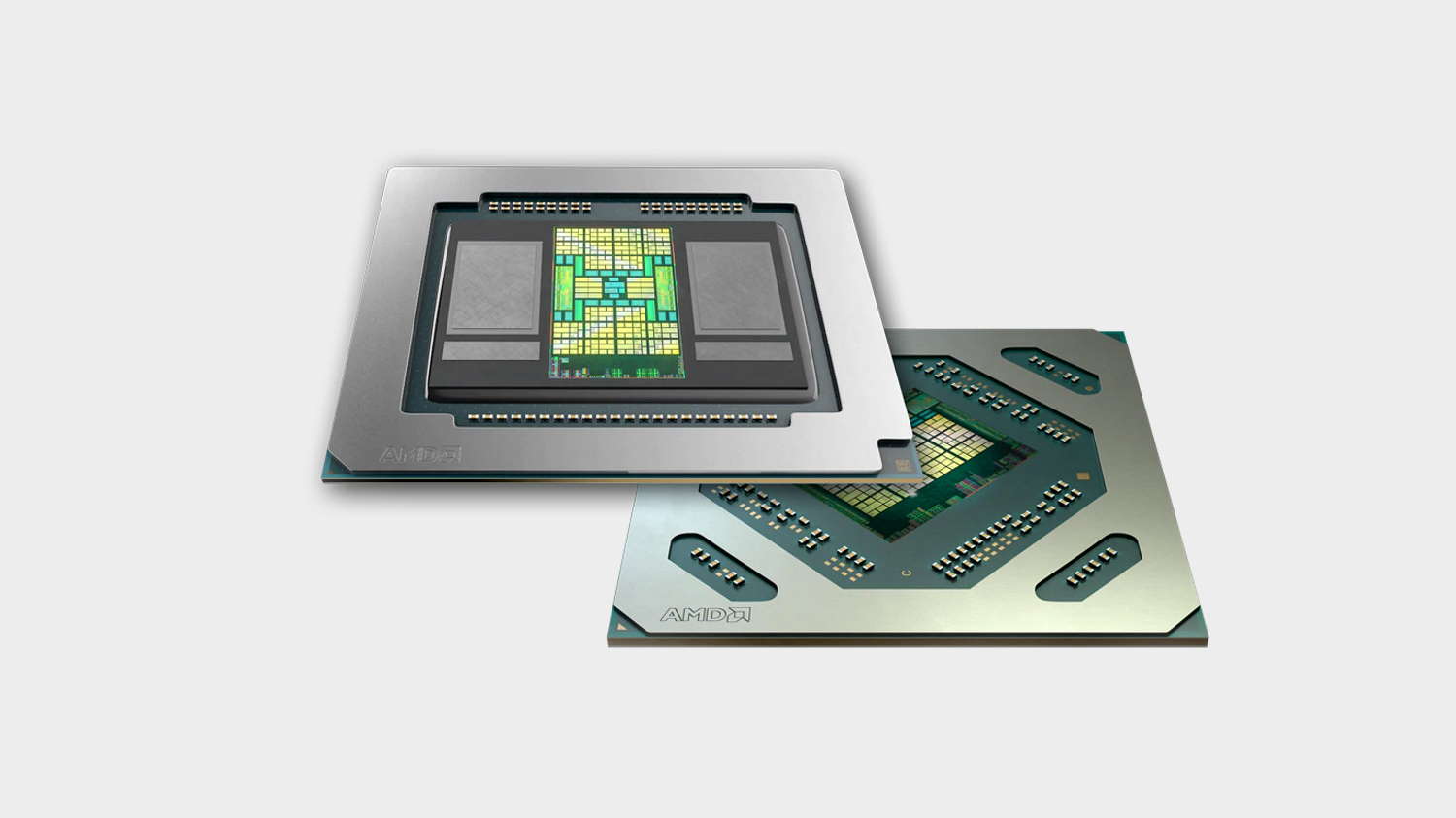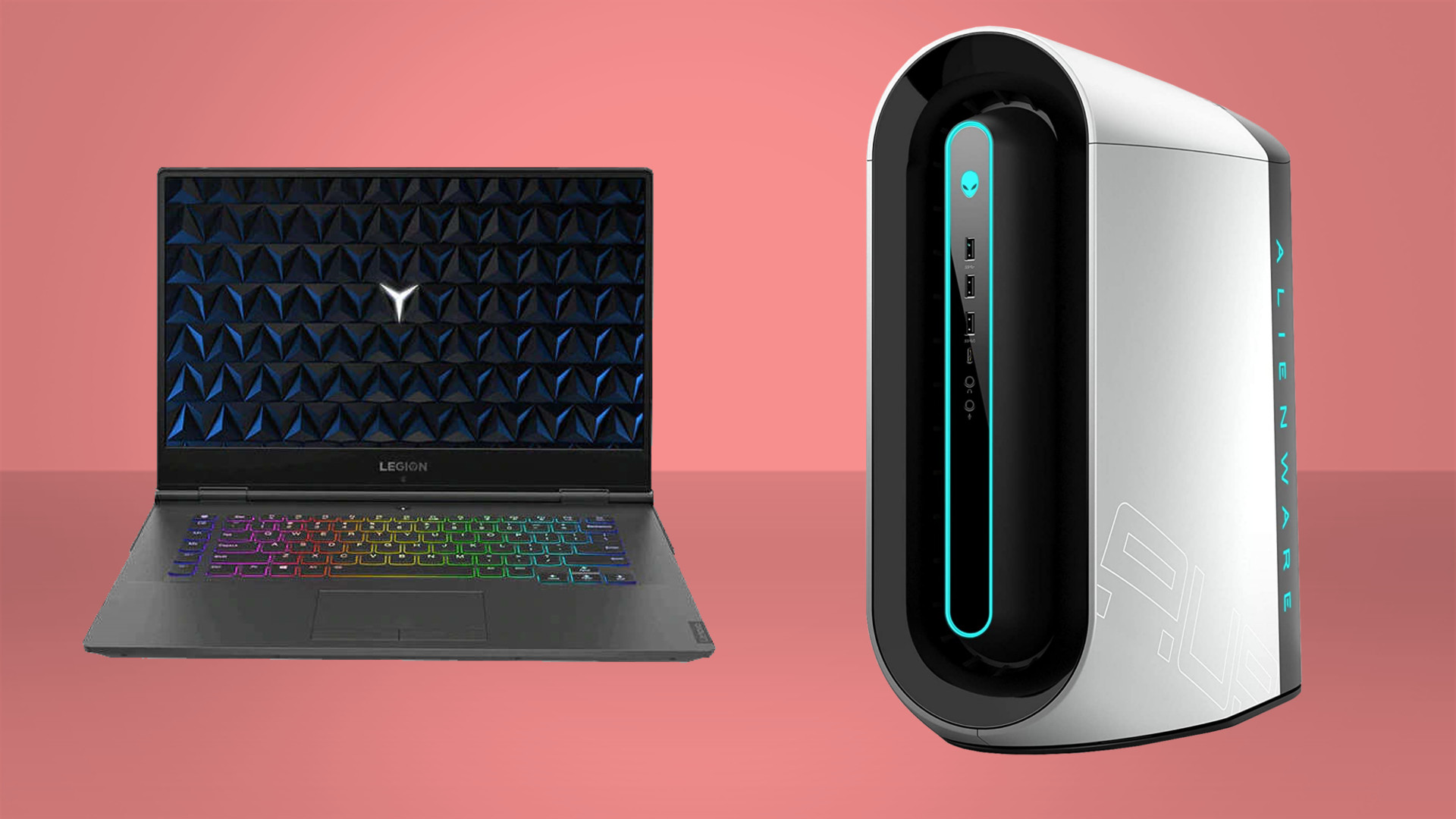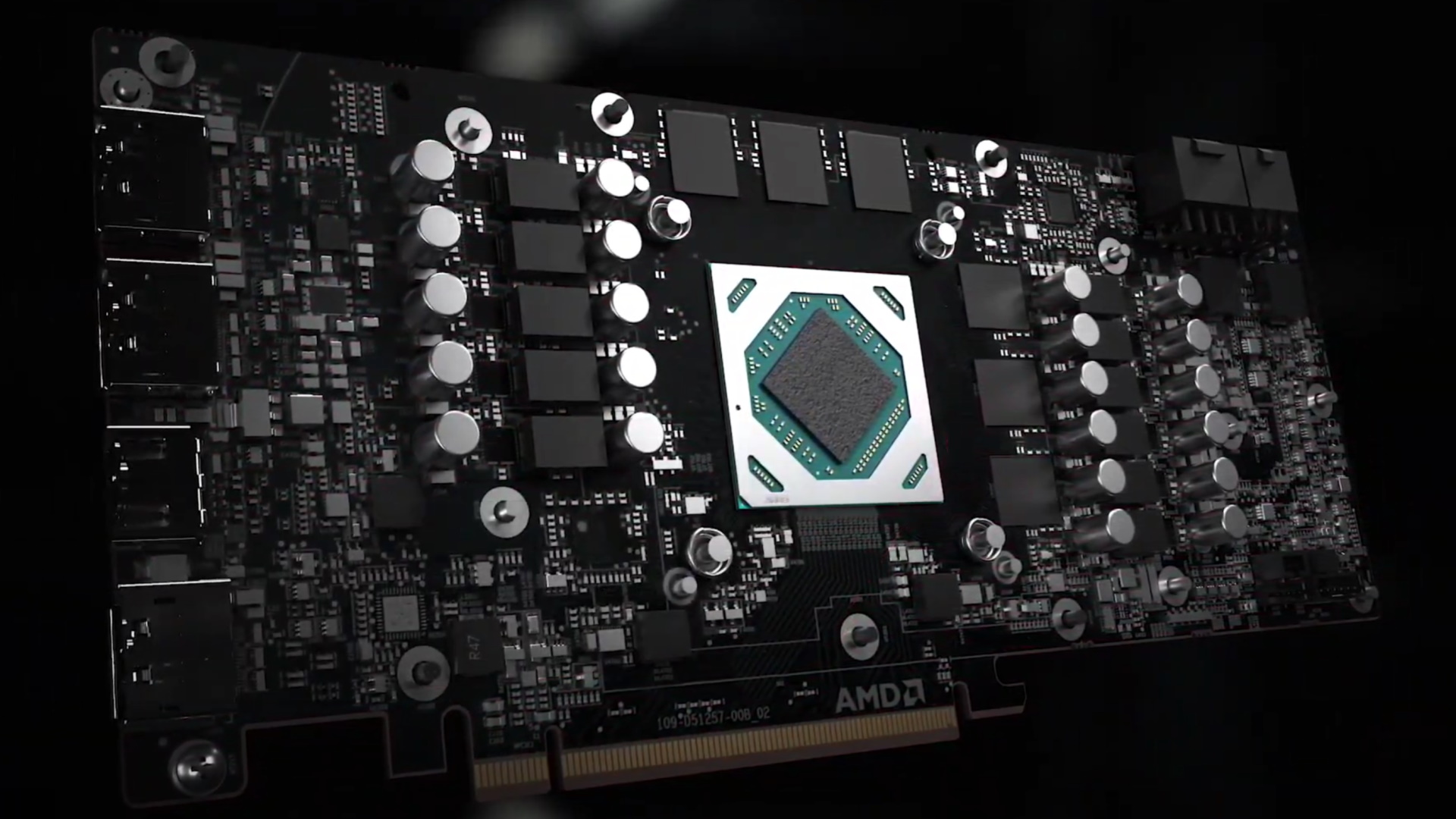AMD's Apple-exclusive GPU could be repurposed for cryptocurrency mining, for all the good it'll do
That's kinda all it can do right now to combat the rise in cryptocurrency mining and the dearth of gaming graphics cards.

Hot on the heels of Nvidia's unveiling of its own Cryptocurrency Mining Processors, those Turing-based CMP cards, AMD looks like it's about to announce its own Navi-based version. Every little helps they say, and so if AMD can make a little splash in the cryptocurrency ocean by releasing its own mining-specific GPUs, then we can only hope that might free up the odd graphics card here and there for us gamers.

Best gaming PC: the top pre-built machines from the pros
Best gaming laptop: perfect notebooks for mobile gaming
The news comes from an AMDGPU kernel driver update announcement (via Tom's Hardware) that listed certain fixes for the Linux environment. The 'Handle new NV12 SKU' detail in the note refers to a new version of the Navi 12 GPU that has so far only seen the light of day in the AMD Radeon Pro 5600M (exclusively for Apple) and Radeon Pro V520 cards (for pro rendering).
What makes this seem like a perfect candidate for a mining-specific release, however, is the fact that it is listed as not having support for VCN (Video Core Next). That makes the card essentially a dumb GPU with no ability to output, and an ideal crypto-mining option.
There were reports towards the end of last year about a similarly output-less SKU of the Navi 10 GPU (the power behind the standard RX 5700 and RX 5600-series cards), which all seems to point to a new line of old RDNA 1 chips being repurposed to take some of the strain off the newer RDNA 2 cards.
To be fair, the latest gaming-centric version of the architecture doesn't deliver particularly effective mining silicon, not in comparison with how effective something like the AMD Radeon RX 6800 XT is when it comes to gaming frame rates. So where Nvidia dipping into its reserves to surface some Turing chips for its crypto cards could be seen as a bit of a slap in the face for the mining community, AMD's RDNA 1 GPUs are as effective as Radeon chips get.
And if it's the same Navi 12 GPU that the Apple and pro peops got out of AMD in the last generation then that will also be the only RDNA 1 chip to come with HBM (high bandwidth memory). Though latency is more important than bandwidth for mining Ethereum, and HBM isn't as good as GDDR5 on that front, so that could be less impactful than it might otherwise seem.
With the recent AMD Radeon RX 6700 XT announcement there was zero mention of the pressures that the rise in cryptocurrency mining has had on the availability of graphics cards around the world, and the only mention the red team made about stock issues was to suggest that releasing its reference cards and the third-party designs on day one would be a fix.
The biggest gaming news, reviews and hardware deals
Keep up to date with the most important stories and the best deals, as picked by the PC Gamer team.

With the launch of a specific mining SKU it could at least show that it's doing something to try and keep gaming GPUs in the hands of gamers. We don't think, because of the proclivity for Linux within the mining community, that AMD is able to do the same sort of Ethereum limiter Nvidia looks to be doing on its future GeForce cards. Which makes repurposing its old GPU designs for the cause almost all it can do.
Though, in the same way that we're unsure about the efficacy of Nvidia's CMP push on that front, mining specific cards are far less appealing to miners because of the complete lack of any resale value. That ends up making them a last resort for the crypto crew once all the other gaming cards on offer have already been swallowed up.

Dave has been gaming since the days of Zaxxon and Lady Bug on the Colecovision, and code books for the Commodore Vic 20 (Death Race 2000!). He built his first gaming PC at the tender age of 16, and finally finished bug-fixing the Cyrix-based system around a year later. When he dropped it out of the window. He first started writing for Official PlayStation Magazine and Xbox World many decades ago, then moved onto PC Format full-time, then PC Gamer, TechRadar, and T3 among others. Now he's back, writing about the nightmarish graphics card market, CPUs with more cores than sense, gaming laptops hotter than the sun, and SSDs more capacious than a Cybertruck.

